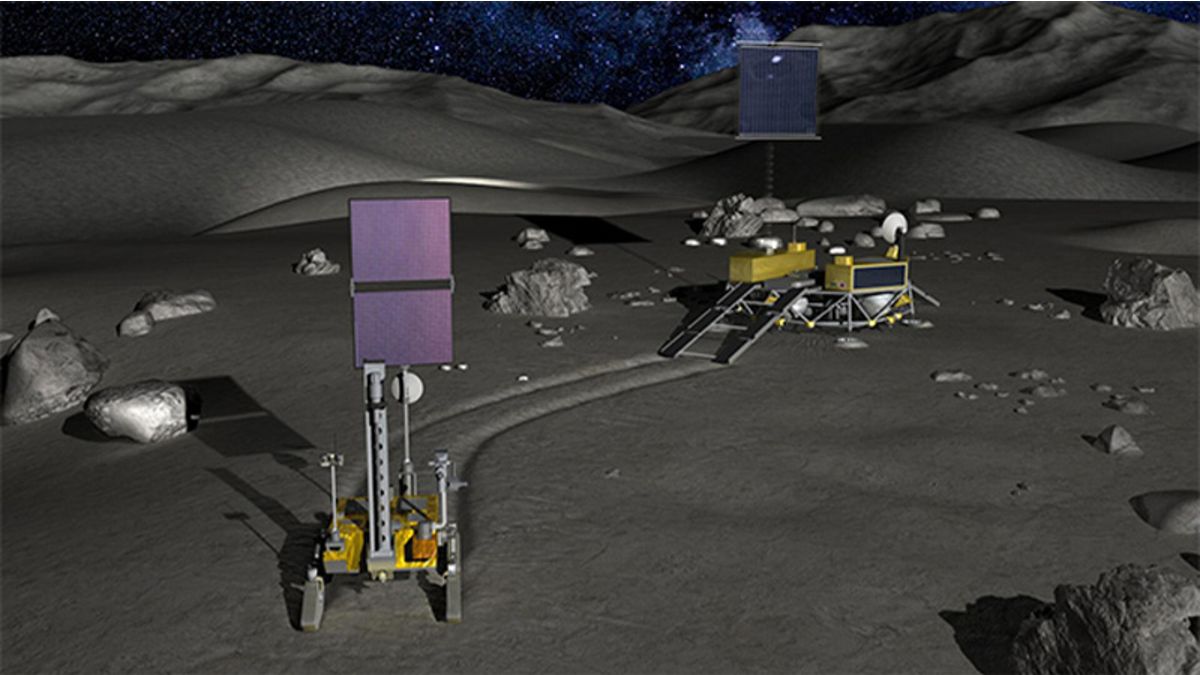After Chandrayaan-3, India is set to take the next big leap in fulfilling its lunar ambitions as the country’s apex body on space missions, the National Space Commission, cleared the fifth lunar mission - the Lunar Polar Exploration Mission or Lupex.
As per a report by The Times of India, a collaborative effort between the Indian Space Research Organisation (ISRO) and Japan Aerospace Exploration Agency (JAXA), Lupex is part of India’s larger lunar roadmap that ultimately envisions sending an astronaut to the Moon and bringing them safely back.
What makes this mission one of a kind is its duration, the mission could live for up to 100 days on the lunar surface, a stay that would be over five times the duration of Chandrayaan-3’s mission life, reports WION citing ISRO.
When can we expect liftoff? What unique goals does Lupex aim to accomplish? Let’s dive into the details of this groundbreaking mission.
1. The joint moon mission, which will land at the exact lunar south pole (90-degree latitude), is aimed at investigating the Moon for water and other valuable resources.
According to both agencies, Lupex will also analyse the quantity, and distribution of water on the lunar surface and below ground, and forms like water’s mix with dry regolith—the layer of loose rock and dust on top of the Moon’s bedrock.
2. Further, the Indo-Japanese mission plans to explore the permanently shadowed regions or the dark side of the moon and gain expertise on its surface through drilling and in-situ experiments.
“In our previous lunar missions, we have already successfully demonstrated orbiting, landing and rovering. The next step is that we should bring something back from the moon. That is why we are participating in the Lupex mission which is going to be very useful for future sampling missions and landing of humans on the surface of the moon by 2040,” Anil Bharadwaj, director of Physical Research Laboratory (PRL) was quoted as saying in The Hindu.
3. According to the WION report citing Nilesh Desai, director, Space Applications Centre, ISRO, the launch vehicle for the mission will be a Japanese rocket, the lander system will be developed by ISRO while the rover by JAXA. The Lupex rover, which could weigh a significant 350 kg, will be much larger than Chandrayaan-3’s Pragyan rover which weighed 26 kg.
4. As per Bharadwaj, the ISRO-designed lander will include advanced scientific instruments, such as a ground-penetrating radar, mid-infrared spectrometer, and Raman Spectrometer, along with the Permittivity and Thermophysical Investigation for Moon’s Aquatic Scout (PRATHIMA) payload. Additionally, Japanese sensors will be integrated to provide a comprehensive suite of tools for in-depth lunar studies.
5. According to the Times of India report citing Isro chairman S Somanath, Lupex will be put up for cabinet clearance soon. Usually, joint missions of this scale require various phases of detailed discussion, and technical planning before they can proceed to the hardware development, integration, and testing.
6. The mission’s progress, despite COVID-19 delays, is moving forward steadily, according to JAXA’s statement to ThePrint. However, a few more years will be needed before the mission is fully prepared for launch.
7. In recent times, India and Japan have made significant strides in lunar exploration.
In August 2023, Chandrayaan-3’s landing near the lunar south pole made India the fourth country to achieve a successful Moon landing, followed by Japan’s January 2024 success with the Smart Lander for Investigating Moon (SLIM), making Japan the fifth country to land on the Moon.
With input from agencies


)

)
)
)
)
)
)
)
)



